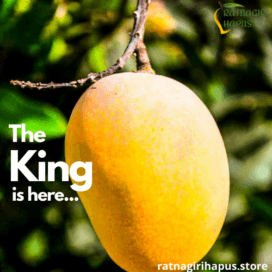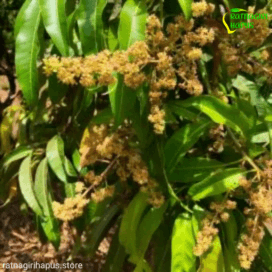
This blog is intended to know you What to Know about Mangoes. This is a type of plant food with a fleshy outer section that surrounds a shell, or pit. This pit contains a seed. There are many different kinds of mango. They vary in colour, shape, flavour, and seed size. Although mango skin can be green, red, yellow, or orange, its inner flesh is mostly golden yellow. It is part of culture, festivals, language, civilizations, and diplomacy. It’s called as king of all fruits.
The Mango is said to have its origin in Asia (Southern India, 5000 years ago) and is now cultivated all over the world. The word mango is derived from “manke” a Tamil word. Portuguesa merchants were the first to use the word “manga”. In the 15 th and 16 th centuries, British merchants change the term manga into “mango”. Mango is the national fruit of India, Pakistan and the Philippines, while the mango tree is the national tree of Bangladesh.
What to Know about Mangoes


Depending on the tree species, mango trees can reach 30–40 m (98–131 feet) tall and have a crown radius of 10–15 m (33–49 feet). Some specimens of these trees are still fruiting after 300 years, indicating that the trees have a long lifespan. A simple leaf can be as long as 30 cm (12 inches) and is lanceolate in shape. Small, pinkish, and fragrant flowers appear in large terminal panicles. There are some flowers with both stamens and pistils, and others have only stamens.
There is a great deal of variation in the shape and size of the fruit. It can appear oval, round, heart-shaped, kidney-shaped, or long and slender. Some mangoes weigh 1.8 to 2.3 kg (4 to 5 pounds), while others are no larger than plums. Some varieties are vividly coloured with shades of red and yellow, while others are dull green. The single large seed is flattened, and the flesh that surrounds it is yellow to orange in colour, juicy, and of distinctive sweet-spicy flavour.
What to Know about Mangoes
Origin
The most seasoned mango tree is found in Khandish of Central India, which is 300 years of age yet bear natural products”. It was ordinarily filled in the East Indies before the earliest visits of the Portuguese who obviously acquainted it with West Africa right off the bat in the sixteenth 100 years and furthermore to Brazil. In the wake of becoming laid out in Brazil, the mango was conveyed toward the West Indies, being first established in Barbados in around 1742 and later in the Dominican Republic. It arrived at Jamaica in around 1782 and, right off the bat in the nineteenth Hundred years, arrived at Mexico from the Philippines and the West Indies.
In 1885, seeds of the fantastic ‘Bombay’ mango of India were brought from Key West to Miami and bringing about two trees that thrived until 1909.
New Delhi hosted the Worldwide Society for Plant Science’s Global Conference on Mango and Mango Culture. India, in 1969 with the end goal of gathering an assortment of germplasm from around the world and empowering helpful examination on rootstocks and bearing way of behaving, hybridization, illness, stockpiling and transport issues, and different areas of study.
What to Know about Mangoes
Varieties of mango
Alphonso Mangoes – Ratnagiri, Maharashtra
Kesar Mangoes – Junagadh, Gujarat
Dasheri Mangoes – Lucknow and Malihabad, Uttar Pradesh
Himsagar and Kishan Bhog Mangoes – Murshidabad, West Bengal etc…
Mango Tree, Fruit, Nutrients, Minerals, and Benefits
“This traditional style is no more with us. Poor or rich families must exchange their first fruit (mangoes) according to their means from the markets”.
“The mango tree is Holy Tree to Buddhism”.
A famous Muslim poet Mirza Ghalib was fond of mangoes. There was once a conversation between him and a friend “Mirza“, who dislikes mangoes. .
The summer season in Pakistan is the season of the first fruit (mango). Pakistan grows a wide variety of mangoes. It is the sixth-largest producer of mangoes in the world. There are many ways to consume mangoes in Pakistan, including directly, in salads, in desserts, in pickles, smoothies, milkshakes, or even mango lassi.
The varieties of mangoes produced in Pakistan are popular all over the world. The most popular varieties of mangoes found in Pakistan are:
Tropical regions can easily grow mango trees in their foot gardens. This is because the soil is not the most important factor for its growth, an ideal climate is necessary for its growth.
Conclusion
Mangoes make for one of the most popular fruits across the world. In addition to being sumptuous, pulpy and amazing, mangoes pack a host of health benefits too! Mangoes are eaten worldwide during the summer season and are used in various ways, such as drinks, ice creams, yoghurts, and cake puddings.
This article concludes that the Alphonso mango offers you many health-related benefits, and its taste as compared to other mangoes is unique and different; thus, you can say that these mangoes are the “king of mangoes”
How to plant a Mango Seed?
References:
- Wikipedia, about the fruit mango
- national library of medicine, mango breeding
- bdnews24.com, mango tree, the national tree
- medical news today, what to know about mangoes
- Britannica, mango plant, fruit
- howstuffworks, mango seed plant
- etymonline.com, mango
- scientificasif, nutrition, benefit, sciencedirect
- holidify, mango varieties
- food.ndtv, mango benefits
- mangobasket, king of fruits, conclusion
